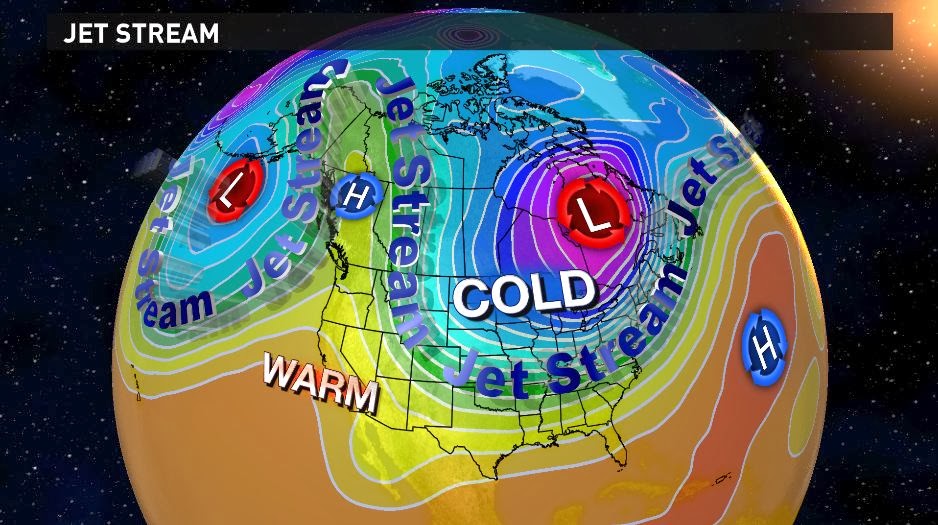The
first major North American weather event of 2014 was the cold Arctic outbreak
in the first week of January. The term
polar vortex became the buzz word (in the media) for the cold outbreak, though
it was much more. As a previous post notes this was a pattern extending back to late October of 2013.
The
term polar vortex has been around since the 1940s. From the American Meteorological Society
Glossary of Meteorology:
The westerly airflow is largely a manifestation of the thermal
wind above the polar frontal zone of middle and subpolar
latitudes. The vortex
is strongest in winter when the pole-to-equator temperature
gradient is strongest. In the Northern Hemisphere, the vortex has two centers
in the mean, one near Baffin Island and the other over northeast Siberia.
I prefer to use the term Arctic
outbreak to describe what happened in early January. The polar vortex was involved, but the
overall pattern was much more than the polar vortex. The winds in the upper atmosphere plunged
from northwestern Canada into the southeastern U.S. due to an amplification of
the ridge of high pressure off the West coast and the deep trough over the
eastern part of North America.
NASA put together a movie of
temperature observations from
NASA's Atmospheric Infrared Sounder (AIRS) instrument on NASA's Aqua spacecraft. The Atmospheric Infrared Sounder, AIRS, in
conjunction with the Advanced Microwave Sounding Unit, AMSU, sense emitted
infrared and microwave radiation from the Earth to provide a three-dimensional
look at Earth's weather and climate. Working in tandem, the two instruments
make simultaneous observations all the way down to the Earth's surface, even in
the presence of heavy clouds. With more than 2,000 channels sensing different
regions of the atmosphere, the system creates a global, three-dimensional map
of atmospheric temperature and humidity, cloud amounts and heights, greenhouse
gas concentrations, and many other atmospheric phenomena. The AIRS and AMSU fly
onboard NASA's Aqua spacecraft and are managed by the Jet Propulsion
Laboratory, Pasadena, California, under contract to NASA. JPL is a division of
the California Institute of Technology in Pasadena.
The
temperatures shown are at a pressure of 850 hectopascals (hPa, also known as
850 mbs) which is at an altitude of 4500 to 5000 feet over much of the U.S. It
begins on December 1, 2013 and runs through January 7, 2014. The most obvious feature of the movie is the
tongue of cold air moving out of Canada and southward to cover much of the
eastern United States during early January 2014.
 |
This is a picture of the last day of the movie, Tuesday, January 7, 2014. The dark blue areas start at -12° C and become purple at -24° C. This was the farthest extent south and the surface temperature dropped to 13° F in Columbia, SC, with a wind chill temperature of 3° F. Click on the image for a larger view. Image Credit: NASA.
|







